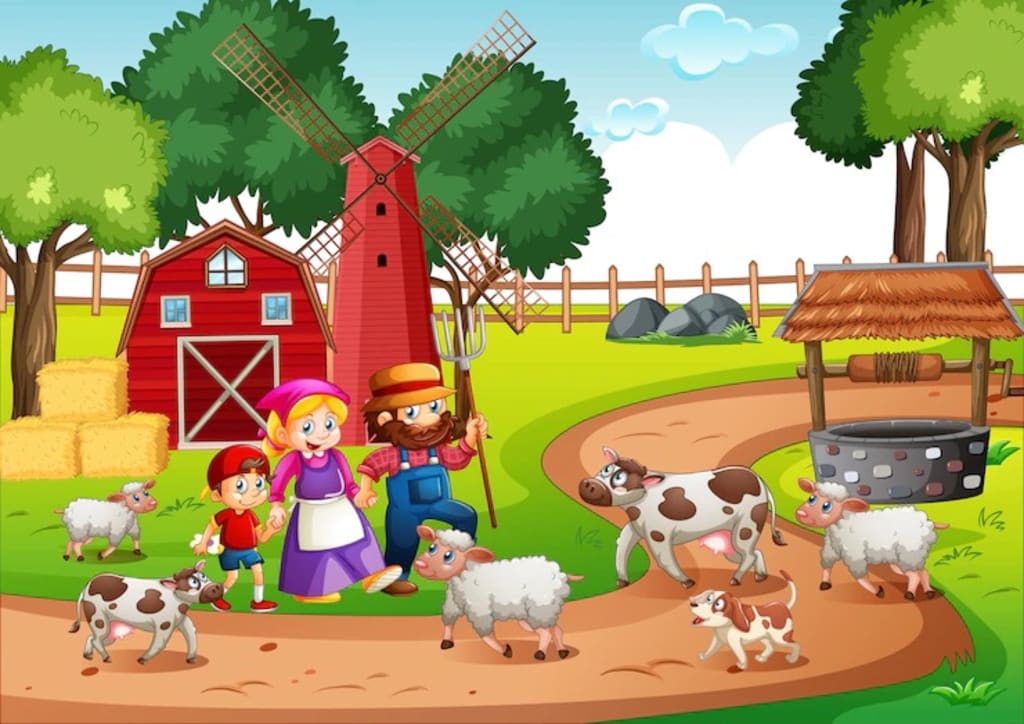Calming Nursery Rhymes
Nursery rhymes serve to soothe every kid. But what kind should you prefer for your kids? Here is all you need to know about calming nursery rhymes.

Music has verified impacts on our brains from childhood till adulthood. The brain processes music in particular areas during the first months after birth.
It enables the baby to connect, communicate, coordinate, move, relax, and feel pleasure. For example, calming nursery rhymes calm babies and put them to sleep. These are soothing songs with an excellent balance of rocking music that entices the baby into sleep. Rhymes for kids have been a time-tested bedtime habit by parents over the years.
Singing nursery rhymes to children as babies can help formulate their language and communication skills from an early age. There are several ways adults can make this kind of learning fun, whether by using music, props, or instruments.
Developing a fun experience for children will help immerse them, making it more feasible to sit and participate in the rhymes. It is significant to remember that younger children will only sit for brief periods, so do not expect them to sit for longer periods.
As children evolve at different rates, using rhymes will support children's language development at whatever phase they are at—older children may be starting to learn to rhyme; on the other hand, younger children may still be at the phase of learning new words.
What is a Lullaby or Nursery Rhyme?
A lullaby or nursery rhyme is a calming song that relaxes a baby and soothes them to sleep. These songs have various ancient origins, but most comprise modern music. Parents have incorporated lullabies into their child's bedtime rituals for years.
A lullaby is normally based on a 6/8 time signature with a rhythmic, gentle melody. It also comprises repetitive lyrics to make the child familiarized with the song. Lullabies come in various languages around the world.
What are the Benefits of Calming Nursery Rhymes to Babies?
Babies understand how to differentiate between sounds and melodies from an early stage. They can also identify different melodies and characters from a video. Infants can also influence an object with precise lyrics and songs. The advantages of rhymes for kids are as follows:
Cognitive Development
Repetition of stories and rhymes is good for the brain, teaching how language functions and constructing memory capabilities. Nursery rhymes help formulate inferencing skills, learn new terms, and reading comprehension. Because these poems comprise patterns, they are simple memorization pieces.
Clear Speech
Nursery rhymes are significant for language acquisition and assist with speech development. They enable children to formulate auditory skills like differentiating between sounds and acquiring the ear to harmonize words.
Nursery rhymes help kids learn fluent words, modulate voices such as practicing volume, pitch, and inflection and pronounce them clearly by saying them repeatedly without fear of criticism. Nursery rhymes are wonderful, the natural option for a first recitation choice.
The tongue and mouth muscles are developed as kids recite these rhymes. Hearing comprehension is a foundational aptitude often forgotten, but nursery rhymes can help ensure this vital ability is covered.
Reading Enrichment
Nursery rhyme understanding delivers an incredible foundation for later scholarly works. They are a wonderful introduction to stories since many include a beginning, middle, and end. Familiarity with these rhymes makes good readers, despite discrepancies in social background. Working with these poems helps children catch the phonetic segments of words.
Language Command
Nursery rhymes help to increase vocabulary and help kids incorporate language. They are an excellent introduction to poetry, and it also helps to promote spelling skills. Rhymes introduce literary devices like onomatopoeia, alliteration, imagery, etc.
Creativity
Nursery rhymes develop children's imaginations. In addition, they help to facilitate creative dramatization when kids act the scenarios out.
History
The classic nursery rhymes preserve culture and deliver something in common between numerous generations that are an excellent way to connect with grandparents or when meeting new people. In addition, these rhymes teach history and bind a child to the past.
Math Concept
Nursery rhymes are packed with patterns, miners, sequencing, and counting. They also discuss weight, size, and other significant math vocabularies.
Physical Engagement
Since numerous nursery rhymes involve coordination, movement, and physicality are incorporated with their readings. Coordinating fingerplays are beneficial to fine motor skill development.
Social and Emotional Development
Nursery rhymes help to develop humor. Due to the connection between rhythm, movement, and words, singing these songs can be a tremendous group activity.
Kids can learn social skills from numerous rhymes. Nursery rhymes are knowledgeable and can thus provide support and comfort to youngsters in uncomfortable conditions.
Strengthens the Bond Between Child and Parent
Singing nursery rhymes to a baby has a deeper impact on parents' relationship with their child. If a parent is singing a lullaby to their baby in their bedtime routine, it is better to produce a song independently. They can include lyrics that show emotions and one-on-one contact with their baby. Regularly listening to a lullaby will help the baby be closer to the parent.
What are Some Famous Calming Nursery Rhymes?
Many parents sing rhymes for kids, but they can be creative with their lullabies. Every country has different lyrics, melodies, and meanings behind nursery rhymes. So, you can select any of them. Some well-known lullaby baby songs are:
Row, Row, Row Your Boat
This traditional nursery rhyme has been every kid's favorite since the late 1800s. It is a fun and easy-to-learn rhyme with short verses. The song has repetitive lyrics that create a soothing rhythm to put small children to sleep.
Twinkle, Twinkle, Little Star
It is a nursery rhyme, the most iconic English lullaby, and originates back in the 1800s. The song's theme revolves around the magnificence of a star shining in the night sky.
The nursery rhyme is famous even today. It is an easy, short, and sweet poem with a calming melody that calms the child to sleep instantly.
Bed in Summer
This creative little nursery rhyme is all about going to bed in summer when the birds are still awake, and it is light outside, and you would instead still be playing.
Hush, Little Baby
It is a rhythmic nursery rhyme that emanated from a classic American folk song in the 1900s. The couplets of this nursery rhyme are synced and discuss gifts offered to a baby. The melody is joyful and playful but soothing enough to put the kids to sleep immediately. This lullaby also has an easy and simple lyrics structure that you can quickly learn and sing to kinds daily.
Rock-a-Bye Baby
This lullaby or nursery rhyme is from the 1700s and was initially known as "hush-a-bye baby." Later the song became a traditional lullaby for babies. It has brief verses that are easy, soothing to remember, and soft.
How Should You Sing Calming Nursery Rhymes to Your Baby?
Nursery rhymes or lullabies help calm the baby and facilitate their learning and behavioral growth. The following tips will help a parent sing nursery rhymes to their newborn:
Choose Repetitive Lyrics
Nursery rhymes with repetitive lyrics work more effectively. One could try to allot a standard period for lullabies for their child and be regular. You can also select a few songs with similar melodies and lyrics and sing them to your baby simultaneously each night.
Be Soft and Gentle
Try to reduce the volume of your voice to make it calmer and softer, but do not spoil the fun. Retain a balance between relaxation and excitement when singing to your baby.
Make it Playful
If your kid is in the mood for fun, do not make the nursery rhyme too dull for them. Rather, engage them with fun components, like a stuffed toy animal or your pet. You can also act out yawning and sleeping motions with your baby's favorite toy to soothe them to sleep.
Produce a Personalized Lullaby
You can use real-life images and characters in your nursery rhymes to make them more relatable to your child. For example, several songs are from centuries ago. So observe the baby's interest components and sing like you are talking to them.
Conclusion
Introducing kids to various nursery rhymes can enable them to understand and comprehend different sounds. It is a crucial part of formulating those early literacy skills. Listening to multiple sounds in the environment and nursery rhymes gives kids the foundations to read and write. As nursery rhymes are entertaining and full of sounds, kids will tune into these sounds. Older children will experiment with incorporating sounds and mixing them to form a word.
Moreover, nursery rhymes significantly impact children's communication and language development. Children enjoy listening to songs full of rhythm and repetition, and singing rhymes containing these core components helps boost children's communication, language, and literacy development.





Comments
There are no comments for this story
Be the first to respond and start the conversation.